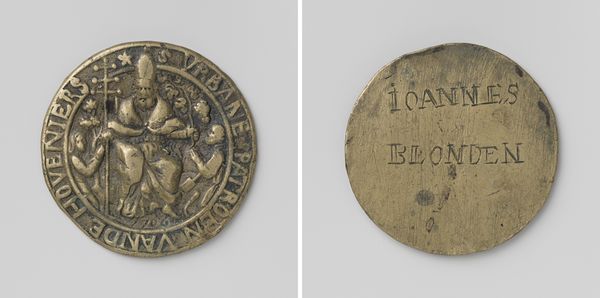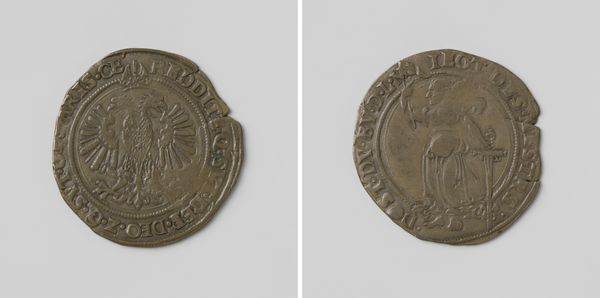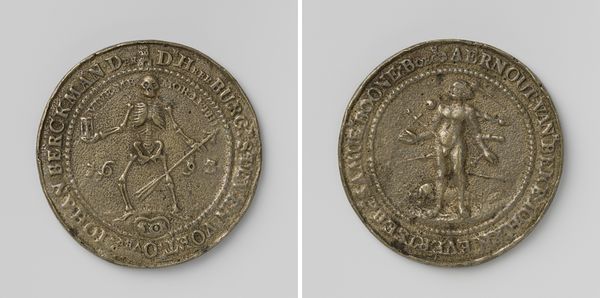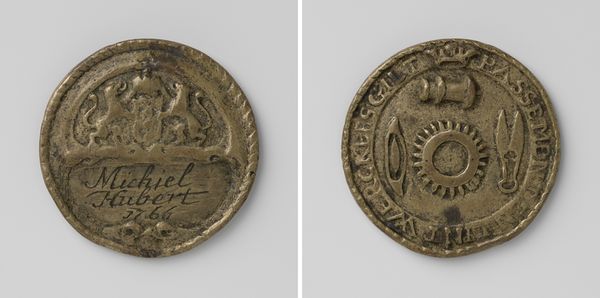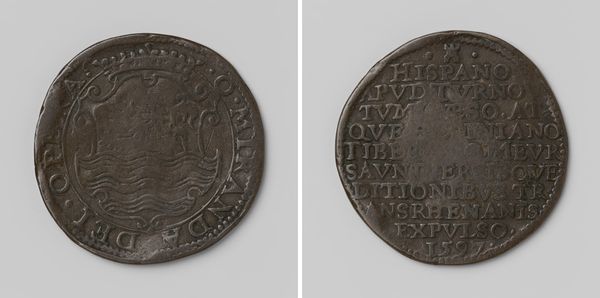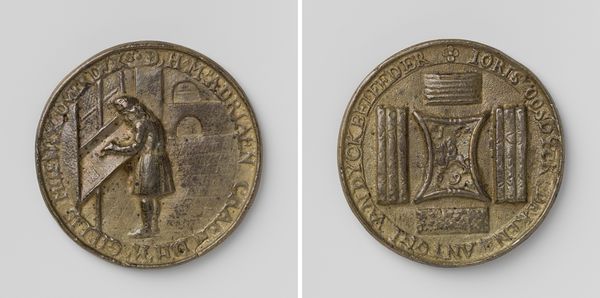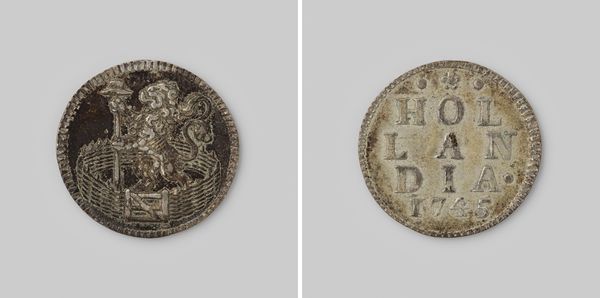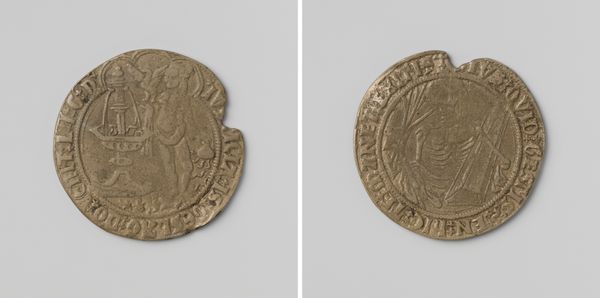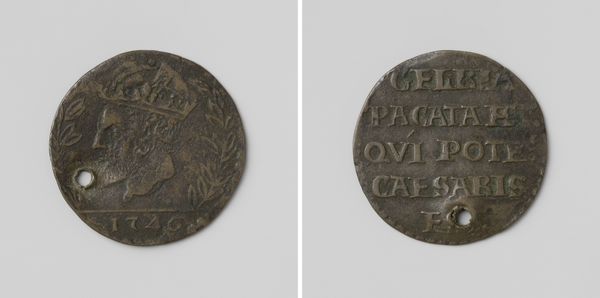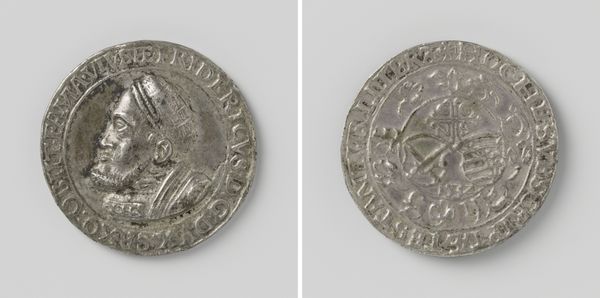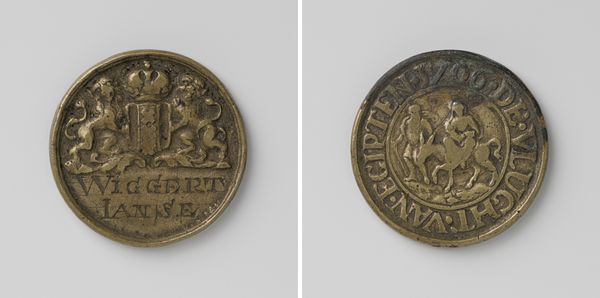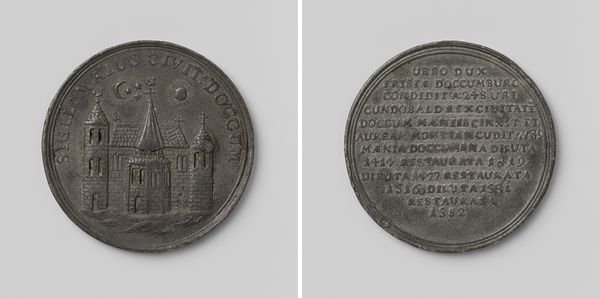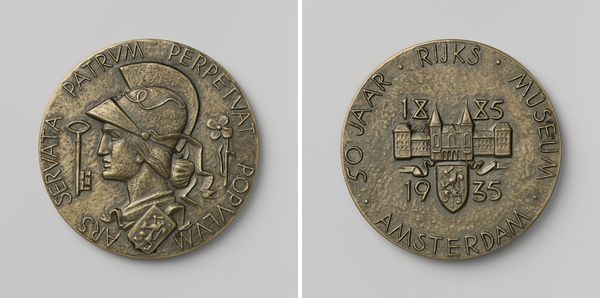
metal, sculpture, engraving
#
baroque
#
metal
#
sculpture
#
sculpture
#
ceramic
#
engraving
Dimensions: diameter 3.2 cm, weight 7.54 gr
Copyright: Rijks Museum: Open Domain
Editor: So, this is the Shoe-makers Guild Coin of Maastricht made by Joannes van Brock in 1742. It seems to be made of metal. What strikes me most is how functional it appears, like a worker's ID tag or something. What can you tell me about it? Curator: This piece offers a fascinating glimpse into the material culture of craft guilds in the 18th century. Rather than focusing on aesthetic beauty, let's consider the means of its production and circulation. Who would have made the brass die and cast these medallions, and where might they have done so? Editor: Presumably, someone within the Guild, a master craftsman perhaps? Curator: Possibly, but it could also have been subcontracted to a specialist workshop. Consider the inscription "Schoenmakersgilde van Maastricht". This medallion wasn't simply about aesthetics; it was about marking membership within a specific labouring community. The material itself—the brass—likely had symbolic value beyond mere functionality, hinting at prosperity and status within that group. Editor: That's a good point. So, it’s less about art, and more about understanding this coin as a representation of social dynamics through material production? Curator: Precisely! It’s also about the networks of exchange that supported its production. Think about where the brass came from, who controlled those mines, and the political economy that allowed guilds like the shoemakers to thrive. What can this object tell us about economic relations at the time? Editor: Okay, now I am considering what went into even making the raw materials used for this small item. It speaks volumes about the hidden stories embedded in the labor involved in its creation. Curator: Exactly, seeing the art world within production and consumption is where things get interesting! Thanks for the walk through this guild object; it was nice examining the hidden dimensions and the labor history embedded in it. Editor: Likewise. Thanks to your perspectives on materials and economics, I see how deeply rooted material culture is in historical forces and hidden workers.
Comments
No comments
Be the first to comment and join the conversation on the ultimate creative platform.
